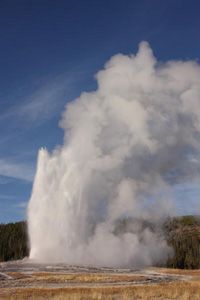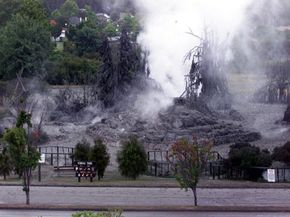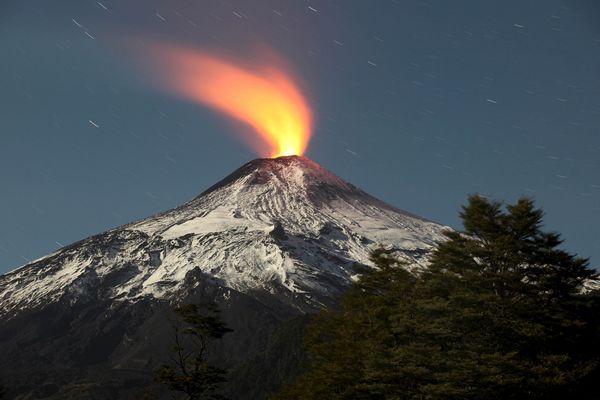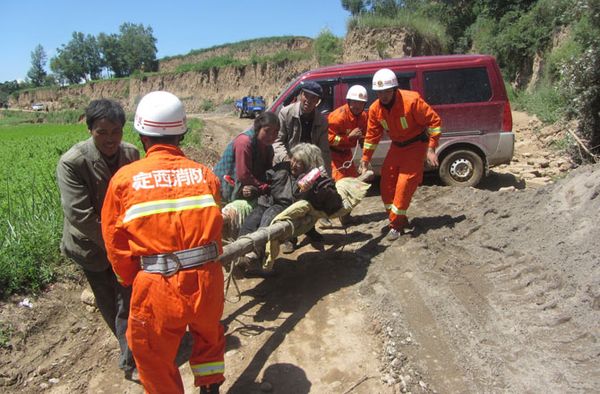Imagine taking all of the water from your neighborhood swimming pool, pouring it into a massive, magma-powered pressure cooker and shooting the water hundreds of feet in the air. Geysers like Old Faithful create eruptions of this scale every day, to the delight of the millions of visitors who witness them each year. Yet, despite the unbelievable forces that drive their eruptions, geysers are among the rarest and most fragile natural phenomena on Earth. Landslides, earthquakes and many other factors can alter a geyser's eruptions or destroy the geyser altogether. What's more, nature isn't the only thing that can impact a geyser: Man has helped to destroy numerous geysers as well, sometimes unintentionally and sometimes through deliberate acts of vandalism.
As of 2009, there are only about a thousand geysers left active on the planet, in geyser fields in such diverse locales as Iceland, New Zealand, Chile and the U.S. [source: Glennon]. The one thing all of these locations have in common with one another is a high level of geothermal activity, one of the key components of geyser formations. Geothermal energy, which is taken from heat within the Earth, drives volcanoes, hot springs and other forms of geothermal activity. Still, a geothermal energy source is just one necessary part of a typical geyser formation.
Advertisement
In this article, we'll explore what else it takes to form a geyser, what exactly causes one to erupt and what makes some geysers so unique. Along the way, we'll also take a look at some springs that look and act like geysers, but operate in a completely different way.



